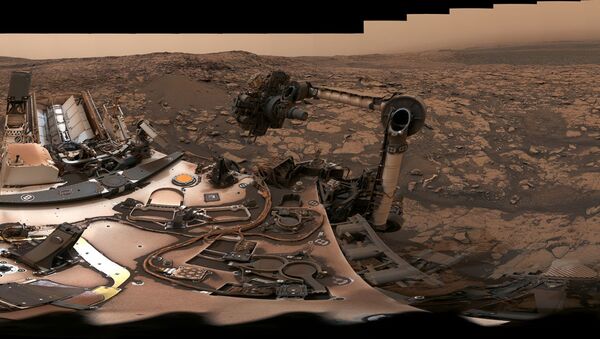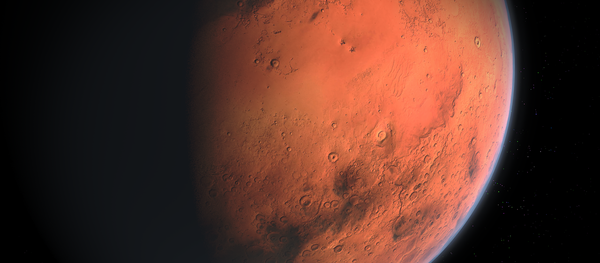Researchers had initially hoped that the Trace Gas Orbiter (TGO), which is currently lingering above Mars, would be able to extract portions of methane — a gas that can be an indication that there is or could be life on the planet — for further studies.
Methane, which is normally produced by living organisms on Earth, has been discovered multiple times, both on the planet’s surface and in its atmosphere; however, the TGO failed to detect any, despite using top-notch on-board sensors that enable it to find traces of methane at levels down to 1/100th the amount previously detected. The new findings were published in the journal Nature and presented at the European Geosciences Union meeting in Vienna.
"The measurements we have made are very surprising. The methane previously detected by ground-based telescopes, the ESA (European Space Agency) Mars Express spacecraft and the NASA Curiosity rover seems to have disappeared”, said Dr Manish Patel, from the Open University, who is in charge of the Nomad chemical analysis instrument on the TGO, adding that “as always”, Mars presents another enigma for scientists to solve.
An increase in methane levels detected on the Red Planet by the Curiosity rover on 16 June 2013 and was picked up again the next day by the Mars Express orbiter, with researchers locating a “spike” in a region near the Gale Crater, a vast bowl where Curiosity landed and which could earlier have contained an ancient lake.
READ MORE: 'Sharp Triangular Piece' Allegedly Spotted on Mars Triggers Alien Speculation
Other results from the TGO, also published in Nature, depict the impact of an overwhelming dust storm that has enveloped the Red Planet and has raised more questions than answers.
ExoMars is a two-part astrobiology mission of the European Space agency and Russia's Roscosmos, whereby the TGO is expected to be joined in the coming years by the UK-built Rosalind Franklin rover, currently being constructed by Airbus and due to probe under the Martian surface for signs of past or present life.
"This data release is the first of many on our mission to unearth the mysteries of the Red Planet. The results both answer, and raise new questions, paving the way for more exciting discoveries from the Rosalind Franklin rover which is due to launch next year", Sue Horne, head of space exploration at the UK Space Agency, noted.


